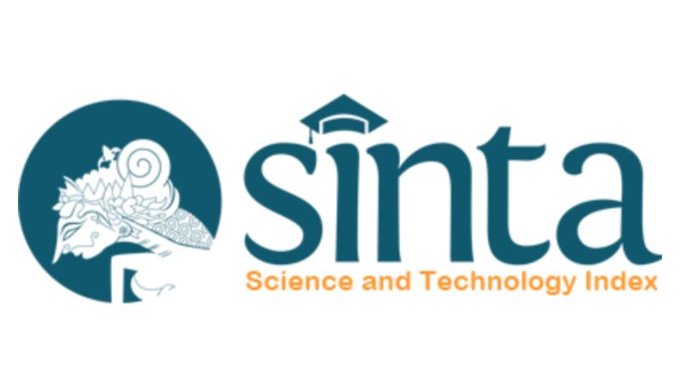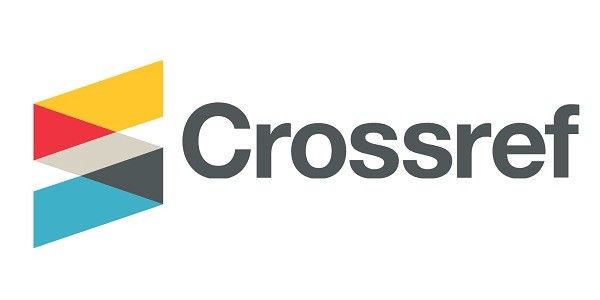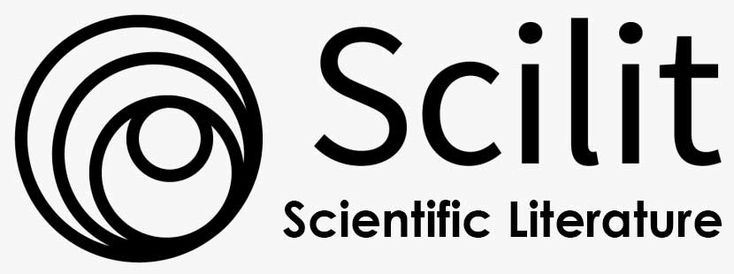Combining Bacteriophage Lysin LYSGH15 and Celery (Apium graveolens L.) Apigenin for Treating Staphylococcus aureus Pneumonia in Children
DOI:
https://doi.org/10.55175/cdk.v50i4.862Kata Kunci:
Apigenin, celery, children’s pneumonia, herbal medicine, MRSA, phage lysinAbstrak
Pneumonia is one of the devastating diseases that affect children under five and can result in high incidence and significant mortality rates. A substantial subset of these cases is caused by Staphylococcus aureus (S. aureus), a Gram-positive bacteria that can cause severe complications and even death. Additionally, antibiotic resistance complicates this problem further. In order to combat this issue, combining flavonoids and bacteriophage products may be a critical solution in decreasing morbidity and mortality rates of pneumonia. Apigenin, extracted from celery (Apium graveolens L.), which has anti-inflammatory and antioxidant effects. Combined with bacteriophage lysin, it can work synergistically against infections and inflammation without being easily resisted by bacteria. This literature review focuses on the use of apigenin and phage lysin, LysGH15, as a treatment for children’s pneumonia, sourced from Google Scholar and PubMed, using several combined keywords such as “new treatment”, “children pneumonia”, “Staphylococcus aureus”, “MRSA”, “new antibacterial”, and “therapy”. Combination therapy shows potential as a new treatment candidate for children’s pneumonia.
Pneumonia dikenal sebagai salah satu penyakit paling mematikan pada anak di bawah 5 tahun, dengan insiden 156.000.000 kasus per tahun, dan angka kematian yang signifikan. Salah satu penyebab penting penyakit ini adalah bakteri Gram-positif Staphylococcus aureus (S. aureus), yang sering menyebabkan komplikasi dan kematian. Peningkatan resistensi S. aureus terhadap antibiotik juga memperumit kondisi ini. Kombinasi perawatan yang berasal dari produk flavonoid dan bakteriofag mungkin dapat menjadi kunci untuk menurunkan morbiditas dan mortalitas. Apigenin adalah salah satu jenis flavonoid yang dapat diekstrak dari seledri (Apium graveolans L.). Bersama dengan lisin dari bakteriofag, kedua komponen ini bekerja secara sinergis dalam kasus infeksi dan peradangan, dengan keunggulan berupa tidak mudah mengalami resistensi oleh bakteri. Tinjauan literatur berasal dari Google Scholar dan PubMed menggunakan beberapa kata kunci: “pengobatan baru”, “pneumonia anak”, “Staphylococcus aureus”, “MRSA”, “antibakteri baru”, dan “terapi” berfokus pada penggunaan apigenin dan lisin bakteriofag, LysGH15, sebagai pengobatan untuk pneumonia anak. Terapi kombinasi ini diharapkan berpotensi untuk dikembangkan sebagai pengobatan pneumonia anak.
Unduhan
Referensi
Jain S, Self WH, Wunderink RG, Fakhran S, Balk R, Bramley AM, et al. Community-acquired pneumonia requiring hospitalisation among U.S. adults. N Engl J Med. 2015;373:415–27. doi:10.1056/NEJMoa1500245.
Yun KW, Wallihan R, Juergensen A, Mejias A, Ramilo O. Community-acquired pneumonia in children: Myths and facts. Am J Perinatol. 2019;36:S54–7.doi:10.1055/s-0039-1691801.
Azmi S, Aljunid SM, Maimaiti N, Ali AA, Muhammad Nur A, De Rosas-Valera M, et al. Assessing the burden of pneumonia using administrative data from Malaysia, Indonesia, and the Philippines. Int J Infect Dis. 2016;49:87–93. doi:10.1016/j.ijid.2016.05.021.
Cilloniz C, Martin-Loeches I, Garcia-Vidal C, San Jose A, Torres A. Microbial etiology of pneumonia: Epidemiology, diagnosis and resistance patterns. Int J Mol Sci. 2016;17:2120. doi:10.3390/ijms17122120.
Gilbert DN, Eliopoulos GM, Chambers HF, Saag MS, Pavia AT, editors. The Sanford guide to antimicrobial therapy 2016. 46th ed. Antimicrobial Therapy; 2016.
Crandall H, Kapusta A, Killpack J, Heyrend C, Nilsson K, Dickey M, et al. Clinical and molecular epidemiology of invasive Staphylococcus aureus infection in Utah children; Continued dominance of MSSA over MRSA. de Lencastre H, editor. PLoS One 2020;15:0238991. doi:10.1371/journal.pone.0238991.
Ensinck G, Ernst A, Lazarte G, Romagnoli A, Sguassero Y, Míguez N, et al. Community-acquired methicillin-resistant Staphylococcus aureus infections: 10-years’ experience in a children’s hospital in the city of rosario, Argentina. Arch Argent Pediatr. 2018;116:119–25. doi:10.5546/aap.2018.eng.119.
Perret C, Le Corre N, Castro-Rodriguez JA. Emergent pneumonia in children. Front Pediatr. 2021;9:676296. doi: 10.3389/fped.2021.676296.
Mendes RE, Mendoza M, Banga Singh KK, Castanheira M, Bell JM, Turnidge JD, et al. Regional resistance surveillance program results for 12 Asia-Pacific nations (2011). Antimicrob Agents Chemother. 2013;57:5721–6. doi:10.1128/AAC.01121-13.
Chiusaroli L, Liberati C, Rulli L, Barbieri E, De Pieri M, Di Chiara C, et al. Therapeutic options and outcomes for the treatment of children with gram-positive bacteria with resistances of concern: A systematic review. Antibiotics 2023;12:261. doi:10.3390/antibiotics12020261.
Vasquez-Hoyos P, Gutierrez IF, Hernandez-Vargas JC, Wilches Cuadros MA, Camacho-Cruz J, Brand-Lopez K, et al. Difference between methicilin-susceptible versus methicilin-resistant Staphylococcus aureus infections in pediatrics. Universidad del Rosario [Internet]. 2022. Available from: https://repository.urosario.edu.co/items/5b258a1d-9071-4720-9869-577498ee6793
Green A, Cockroft JL, Kaufman RA, McCullers JA, Arnold SR. Utility of induced sputum in assessing bacterial etiology for community-acquired pneumonia in hospitalized children. J Pediatric Infect Dis Soc. 2022;11:274–82. doi:10.1093/jpids/piac014.
Centers for Disease Control and Prevention. Special feature on racial and ethnic health disparities. Heal United States. 2015;3:461.
Gu J, Xu W, Lei L, Huang J, Feng X, Sun C, et al. LysGH15, a novel bacteriophage lysin, protects a murine bacteremia model efficiently against lethal methicillin-resistant Staphylococcus aureus infection. J Clin Microbiol. 2011;49:111–7. doi:10.1128/JCM.01144-10.
Gu J, Zuo J, Lei L, Zhao H, Sun C, Feng X, et al. LysGH15 reduces the inflammation caused by lethal methicillin-resistant Staphylococcus aureus infection in mice. Bioeng Bugs. 2011;2:96–9. doi:10.4161/bbug.2.2.14883.
Tang XD, Ji TT, Dong JR, Feng H, Chen FQ, Chen X, et al. Pathogenesis and treatment of cytokine storm induced by infectious diseases. Int J Mol Sci. 2021;22:13009. doi:10.3390/ijms222313009.
Fajgenbaum DC, June CH. Cytokine storm. Longo DL, editor. N Engl J Med. 2020;383:2255–73. doi:10.1056/NEJMra2026131.
Islam D, Lombardini E, Ruamsap N, Imerbsin R, Khantapura P, Teo I, et al. Controlling the cytokine storm in severe bacterial diarrhoea with an oral toll-like receptor 4 antagonist. Immunology 2016;147:178–89. doi:10.1111/imm.12549.
Wu SC, Liu F, Zhu K, Shen JZ. Natural products that target virulence factors in antibiotic-resistant Staphylococcus aureus. J Agric Food Chem. 2019;67:13195–211. doi:10.1021/acs.jafc.9b05595.
Ali F, Rahul, Naz F, Jyoti S, Siddique YH. Health functionality of apigenin: A review. Int J Food Prop. 2017;20:1197–238. doi:10.1080/10942912.2016.1207188.
Xia F, Li X, Wang B, Gong P, Xiao F, Yang M, et al. Combination therapy of LysGH15 and apigenin as a new strategy for treating pneumonia caused by Staphylococcus aureus. Drake HL, editor. Appl Environ Microbiol. 2016;82:87–94. doi:10.1128/AEM.02581-15.
Ferrari R. Writing narrative style literature reviews. Med Writ. 2015;24:230–5. doi:10.1179/2047480615Z.000000000329.
Green BN, Johnson CD, Adams A. Writing narrative literature reviews for peer-reviewed journals: Secrets of the trade. J Chiropr Med. 2006;5:101–17. doi:10.1016/S0899-3467(07)60142-6.
Gasparyan AY, Ayvazyan L, Blackmore H, Kitas GD. Writing a narrative biomedical review: Considerations for authors, peer reviewers, and editors. Rheumatol Int.2011;31:1409–17. doi:10.1007/s00296-011-1999-3.
Zhang L, Li D, Li X, Hu L, Cheng M, Xia F, et al. LysGH15 kills Staphylococcus aureus without being affected by the humoral immune response or inducing inflammation. Sci Rep. 2016;6:29344. doi:10.1038/srep29344.
Wang J, Liu YT, Xiao L, Zhu L, Wang Q, Yan T. Anti-inflammatory effects of apigenin in lipopolysaccharide-induced inflammatory in acute lung injury by suppressing COX-2 and NF-KB pathway. Inflammation 2014;37:2085–90. doi:10.1007/s10753-014-9942-x.
Li J, Zhang B. Apigenin protects ovalbumin-induced asthma through the regulation of Th17 cells. Fitoterapia 2013;91:298–304. doi:10.1016/j.fitote.2013.09.009.
Dong J, Qiu J, Wang J, Li H, Dai X, Zhang Y, et al. Apigenin alleviates the symptoms of Staphylococcus aureus pneumonia by inhibiting the production of alphahemolysin. FEMS Microbiol Lett. 2013;338:124–31. doi:10.1111/1574-6968.12040.
Defres S, Marwick C, Nathwani D. MRSA as a cause of lung infection including airway infection, community-acquired pneumonia and hospital-acquired pneumonia. Eur Respir J. 2009;34:1470–6. doi:10.1183/09031936.00122309.
Kumar S, Singh S, Kumar V, Datta S, Dhanjal DS, Sharma P, et al. Pathogenesis and antibiotic resistance of Staphylococcus aureus. Model organisms for microbial pathogenesis, biofilm formation and antimicrobial drug discovery. Singapore: Springer Singapore; 2020. pp. 99–115. doi:10.1007/978-981-15-1695-5_7.
Gordon RJ, Lowy FD. Pathogenesis of methicillin-resistant Staphylococcus aureus infection. Clin Infect Dis. 2008;46:350–9. doi:10.1086/533591.
Wardenburg JB, Patel RJ, Schneewind O. Surface proteins and exotoxins are required for the pathogenesis of Staphylococcus aureus pneumonia. Infect Immun. 2007;75:1040–4. doi:10.1128/IAI.01313-06.
Borysowski J, Weber-Dąbrowska B, Górski A. Bacteriophage endolysins as a novel class of antibacterial agents. Exp Biol Med. 2006;231:366–77. doi:10.1177/153537 020623100402.
Schmelcher M, Loessner MJ. Bacteriophage endolysins — Extending their application to tissues and the bloodstream. Curr Opin Biotechnol. 2021;68:51–9. doi:10.1016/j.copbio.2020.09.012.
Ho MKY, Zhang P, Chen X, Xia J, Leung SSY. Bacteriophage endolysins against gram-positive bacteria, an overview on the clinical development and recent advances on the delivery and formulation strategies. Crit Rev Microbiol. 2022;48:303–26. doi:10.1080/1040841X.2021.1962803.
Nelson D, Loomis L, Fischetti VA. Prevention and elimination of upper respiratory colonization of mice by group A Streptococci by using a bacteriophage lytic enzyme. Proc Natl Acad Sci. 2001;98:4107–12. doi:10.1073/pnas.061038398.
Loeffler JM, Nelson D, Fischetti VA. Rapid killing of Streptococcus pneumoniae with a bacteriophage cell wall hydrolase. Science (80- ). 2001;294:2170–2. doi:10.1126/science.1066869.
Schuch R, Nelson D, Fischetti VA. A bacteriolytic agent that detects and kills Bacillus anthracis. Nature 2002;418:884–9. doi:10.1038/nature01026. 39. AUSVEG. Veggie Stats: Celery. 2017.
Sakakibara H, Honda Y, Nakagawa S, Ashida H, Kanazawa K. Simultaneous determination of all polyphenols in vegetables, fruits, and teas. J Agric Food Chem. 2003;51:571–81. doi:10.1021/jf020926l.
Khotimah H, Diyantoro D, Indriati DW, Sundari AS. Screening in vitro antimicrobial activity of celery (Apium graveolens) against Staphylococcus Sp. Malaysian J Med Heal Sci. 2020;16:72–7.
Prakoso YA, Rini CS, Rahayu A, Sigit M, Widhowati D. Celery (Apium graveolens) as a potential antibacterial agent and its effect on cytokeratin-17 and other healing promoters in skin wounds infected with methicillin-resistant Staphylococcus aureus. Vet World. 2020;13:865–71. doi:10.14202/vetworld.2020.865-871.
Djatmiko M, Pramono S. Standarisasi sediaan daun seledri (Apium graveolens L.) secara KLT-densitometri menggunakan apigenin sebagai parameter. Maj Farm Indones. 2001;12:59–64.
Gusniwati R. Isolasi dan penetapan kadar apigenin pada ekstrak seledri (Apium graveolans linn.) secara KCKT. Universitas Andalas; 2009.
Zhu T, Park HE, Row KH. Purification of luteolin and apigenin from celery leaves using hybrid organic-inorganic monolithic cartridge. J Liq Chromatogr Relat Technol. 2014;37:1885–94. doi:10.1080/10826076.2013.825848.
National Center for Biotechnology Information. PubChem compound summary for CID 5280443, Apigenin [Internet]. 2004 [cited 2022 Jul 10]. Available from: https://pubchem.ncbi.nlm.nih.gov/compound/5280443#section=3D-Conformer
Gu J, Feng Y, Feng X, Sun C, Lei L, Ding W, et al. Structural and biochemical characterization reveals LysGH15 as an unprecedented “EF-hand-like” calcium-binding phage lysin. Zhang G, editor. PLoS Pathog. 2014;10:e1004109. doi:10.1371/journal.ppat.1004109.
Meyer H, Bolarinwa A, Wolfram G, Linseisen J. Bioavailability of apigenin from apiin-rich parsley in humans. Ann Nutr Metab. 2006;50:167–72. doi:10.1159/000090736.
Ding S, Zhang Z hai, Song J, Cheng X dong, Jiang J, Jia X bin. Enhanced bioavailability of apigenin via preparation of a carbon nanopowder solid dispersion. Int J Nanomedicine. 2014;9:2327-33. doi:10.2147/IJN.S60938.
Gradolatto A, Canivenc-Lavier MC, Basly JP, Siess MH, Teyssier C. Metabolism of apigenin by rat liver phase I and phase II enzymes and by isolated perfused rat liver. Drug Metab Dispos. 2004;32:58–65. doi:10.1124/dmd.32.1.58.
Sadraei H, Asghari G, Khanabadi M, Minaiyan M. Anti-inflammatory effect of apigenin and hydroalcoholic extract of dracocephalum kotschyi on acetic acid-induced colitis in rats. Res Pharm Sci. 2017;12:322. doi:10.4103/1735-5362.212050.
Hanske L, Loh G, Sczesny S, Blaut M, Braune A. The bioavailability of apigenin-7-glucoside is influenced by human intestinal microbiota in rats. J Nutr. 2009;139:1095–102. doi:10.3945/jn.108.102814.
Gradolatto A, Basly JP, Berges R, Teyssier C, Chagnon MC, Siess MH, et al. Pharmacokinetics and metabolism of apigenin in female and male rats after a single oral administration. Drug Metab Dispos. 2005;33:49–54. doi:10.1124/dmd.104.000893.
Criscuolo E, Spadini S, Lamanna J, Ferro M, Burioni R. Bacteriophages and their immunological applications against infectious threats. J Immunol Res. 2017;2017:1–13. doi:10.1155/2017/3780697.
Borysowski J, Łobocka M, Międzybrodzki R, Weber-Dabrowska B, Górski A. Potential of bacteriophages and their lysins in the treatment of MRSA. BioDrugs.2011;25:347–55. doi:10.2165/11595610-000000000-00000.
Golshahi L, Seed KD, Dennis JJ, Finlay WH. Toward modern inhalational bacteriophage therapy: Nebulization of bacteriophages of burkholderia cepacia complex. J Aerosol Med Pulm Drug Deliv. 2008;21:351–60. doi:10.1089/jamp.2008.0701.
Fischetti VA. Lysin therapy for Staphylococcus aureus and other bacterial pathogens. In: Bagnoli F, Rappuoli R, Grandi G, editors. Staphylococcus aureus current topics in microbiology and immunology, vol 409. Springer; 2015. pp. 529–40. doi:10.1007/82_2015_5005.
Leszczyński P, Weber-Dabrowska B, Kohutnicka M, Łuczak M, Górecki A, Górski A. Successful eradication of methicillin-resistant Staphylococcus aureus (MRSA)
Unduhan
Diterbitkan
Cara Mengutip
Terbitan
Bagian
Lisensi
Hak Cipta (c) 2023 Cermin Dunia Kedokteran

Artikel ini berlisensi Creative Commons Attribution-NonCommercial 4.0 International License.





















